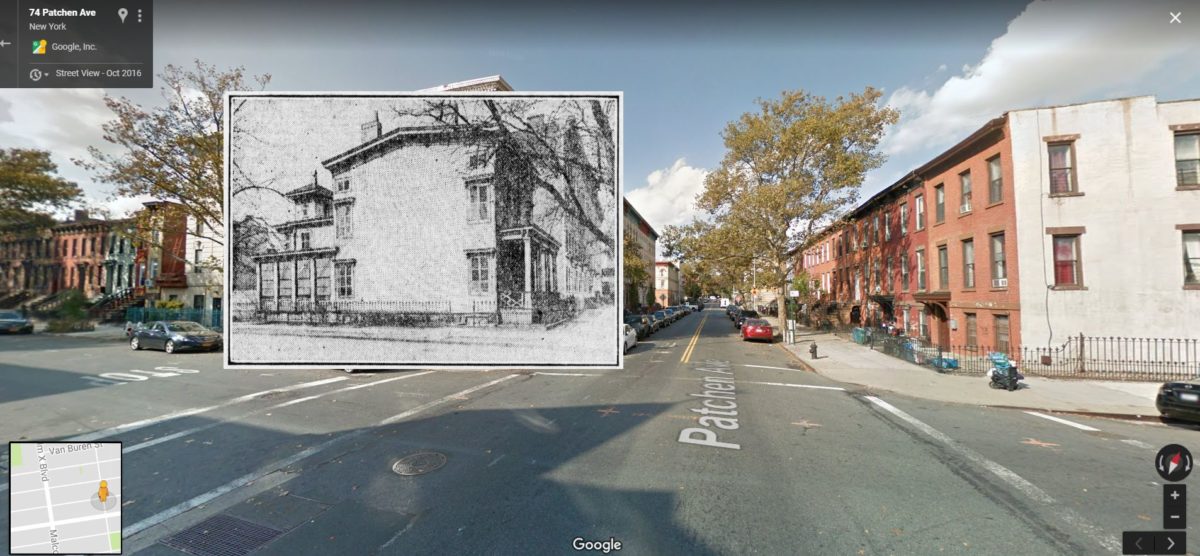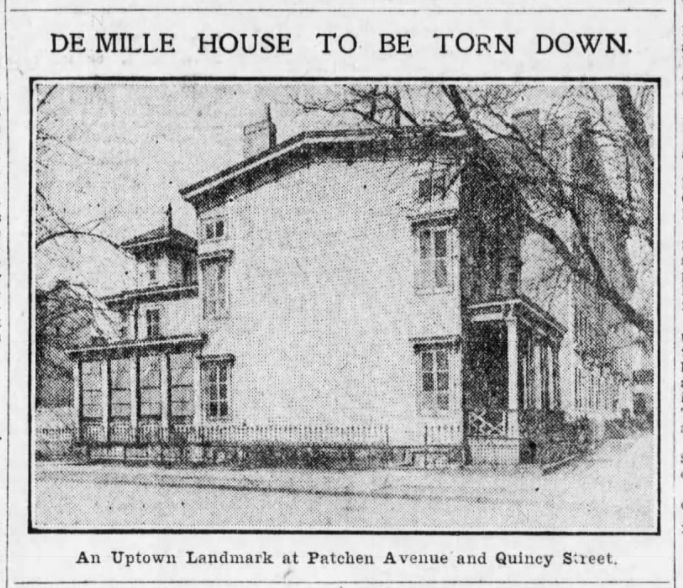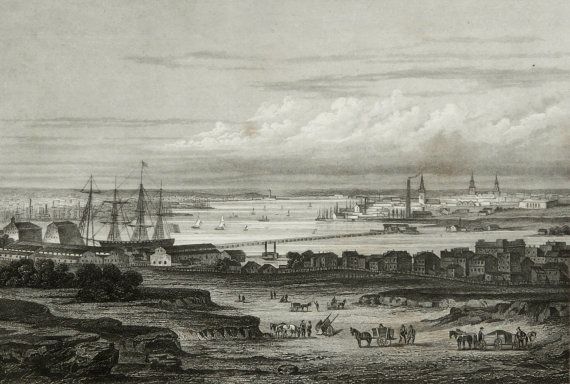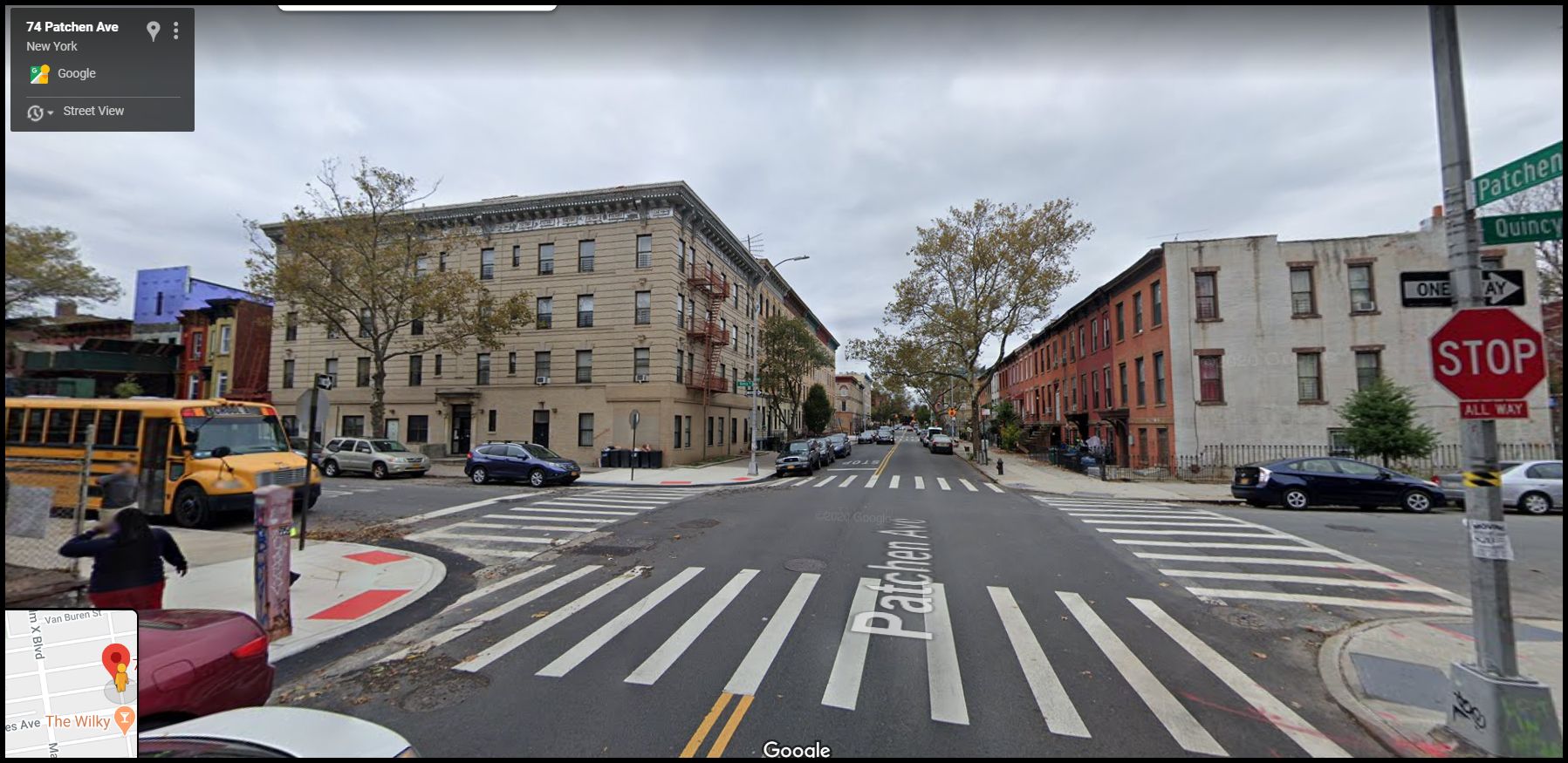SUNSETTING ON A BED-STUY BOULEVARD (1909)

Brownstone Detectives investigates the history of our clients’ homes.
The story you are about to read was composed from research conducted in the course of one of those investigations.
Do you know the history of YOUR house?
********************************************************************************************************************************
It was quite common, though, at the time for owners to tear down the antiquated wood-frame mansions that dotted Brooklyn’s landscape. Since the new brownstone houses had become all the rage in the 1880s, these tinder “firetraps” had become redundant, difficult to sell, and simply unstylish to live in. By the late 19th century, they were being sold, in many cases, for the value of their land as building lots. And with the demise of these historical artifacts, went some truly beautiful examples of mid-19th century architecture, few of which remain with us to this day.
THE DE MILLE HOUSE
The De Mille house was built around the middle of the 19th century for the family of that name, “and it has been a landmark in that region since the days when it was surrounded by open fields.”

Yes, even Bedford-Stuyvesant – today chockablock with brownstone and masonry homes – was once – even before the advent of wood-frame homes – forested land alongside open virgin fields. As a matter of fact, the corner of Quincy and Patchen, in the 1850s, was little more than hills, dales, dirt lanes, and the vague promise of a future suburban city.
“Broadway, which is nearby, was beginning to be built up, but most of the other streets in that vicinity had only been laid out on the map when Thomas De Mille, a New York commission merchant, and his brother invested in property in the region,” noted the Brooklyn Daily Eagle.
“It was before the Civil War broke out and Brooklyn had only a few years before added to its territory the former city of Williamsburg and the town of Bushwick, which stretched beyond that region.
“Mr. DeMille built a substantial house at the intersection of Quincy Street and Patchen avenue, when there were only a few other houses in the vicinity. After 1861 he made it his home with his family, until his death in 1877. His son, Richard De Mille, then occupied the house until about five years ago, when he removed to Halsey street, where his widow now lives,”

The house, the Eagle noted, was a “two-story and a half structure facing Patchen avenue, with an extension of two stories, with a tower, which afforded a fine view of the surrounding region before it was densely built up. A large conservatory extends on the Quincy street side. The house contains fifteen rooms. In front stands two large maples and on the side two tulip trees are in the middle of the sidewalk, having been planted before the street was cut through and paved. In the garden are a number of fruit trees.
“About three years ago Rudolph Burkhardt, who lived on the opposite corner, purchased the house in order to prevent the establishment of an automobile garage there,” the Eagle continued. “He recently sold the property to J. & F. Holler of 15 Kosciusko place who will tear down the present structure and erect four-story apartments on the property, which is 50 by 100 feet in area.
“Mr. Holler hopes to save the trees in the progress of the work of construction. Unless arrangements are made to remove the old house to a new site, which is not probable, it is expected that the work of taking it down will begin next week.”
So appeared the march of time, as an unforgiving sun set on another “uptown landmark.”

———————————————————————————————————————–
 Brownstone Detectives is an historic property research agency. Our mission is to document and save the histories of our clients’ homes. From our research, we produce our celebrated House History Books and House History Reports. Contact us today to begin discovering the history of your home.
Brownstone Detectives is an historic property research agency. Our mission is to document and save the histories of our clients’ homes. From our research, we produce our celebrated House History Books and House History Reports. Contact us today to begin discovering the history of your home.